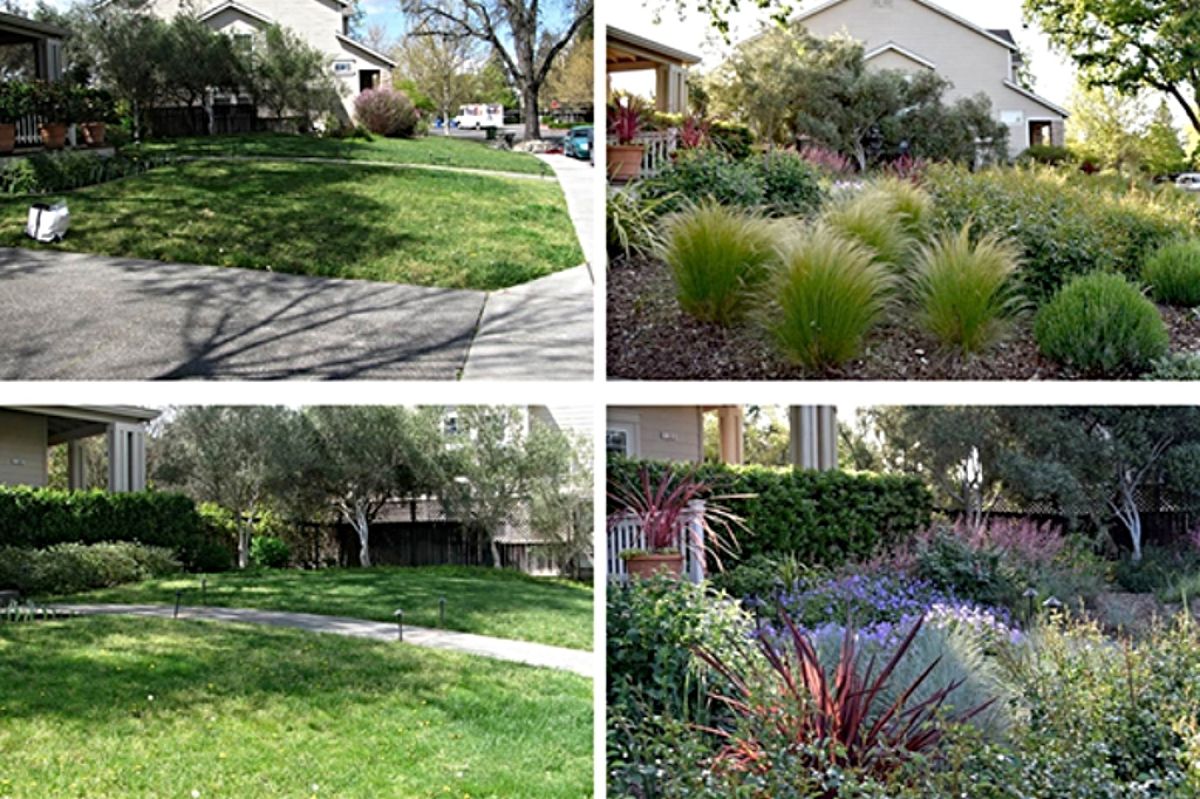
Two examples of naturalized yards, before and after photos. (USEPA Environmental-Protection-Agency, flickr) (USEPA Environmental-Protection-Agency)
Most beginning gardeners think that once plants are set out they will take care of themselves. Experienced gardeners wish that this was the case but know that benign neglect results in an unkempt garden.
Hugh Farmer wrote that:
“All gardens are the result of human artifice. But careful grouping distinguishes the natural garden from both the formal and the wild garden…which is essentially without form. The natural garden, on the other hand, always results from a definite plan.”
A person who sets out to create a garden, even one that looks natural, benefits from abiding by rules so that the results of the gardener’s efforts, though considerable, appear to be effortless.
To create a natural-looking garden the first rule is to emulate plantings that occur naturally in their own region. For example, avoiding the use of materials or plants that are not able to thrive in local conditions so that new items blend in. It is wise to plant items in groups or drifts and never to use singles lined up like soldiers in a row.
It is effective to design and plant garden cameos for each season, even winter. Leave open spaces between groupings of plants, shrubs, and trees so that vistas occur and the effect is uncluttered. Even in areas where grass will never be mowed, areas of grass will set off groups of plants seen from afar. Think of islands of plants where form, texture, and color seen from a distance create what appears to be natural scenes.









